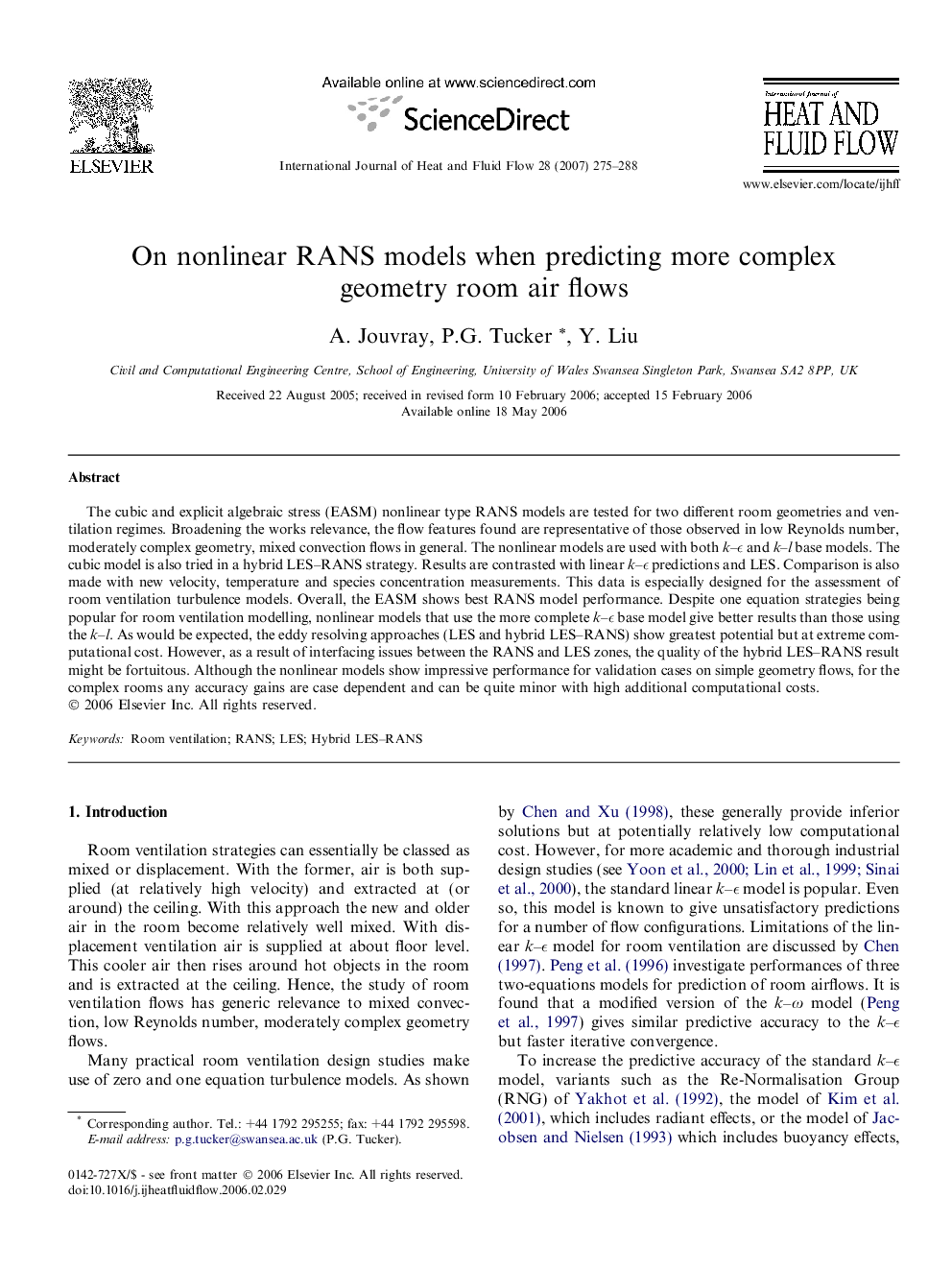| Article ID | Journal | Published Year | Pages | File Type |
|---|---|---|---|---|
| 656101 | International Journal of Heat and Fluid Flow | 2007 | 14 Pages |
The cubic and explicit algebraic stress (EASM) nonlinear type RANS models are tested for two different room geometries and ventilation regimes. Broadening the works relevance, the flow features found are representative of those observed in low Reynolds number, moderately complex geometry, mixed convection flows in general. The nonlinear models are used with both k–ϵ and k–l base models. The cubic model is also tried in a hybrid LES–RANS strategy. Results are contrasted with linear k–ϵ predictions and LES. Comparison is also made with new velocity, temperature and species concentration measurements. This data is especially designed for the assessment of room ventilation turbulence models. Overall, the EASM shows best RANS model performance. Despite one equation strategies being popular for room ventilation modelling, nonlinear models that use the more complete k–ϵ base model give better results than those using the k–l. As would be expected, the eddy resolving approaches (LES and hybrid LES–RANS) show greatest potential but at extreme computational cost. However, as a result of interfacing issues between the RANS and LES zones, the quality of the hybrid LES–RANS result might be fortuitous. Although the nonlinear models show impressive performance for validation cases on simple geometry flows, for the complex rooms any accuracy gains are case dependent and can be quite minor with high additional computational costs.
